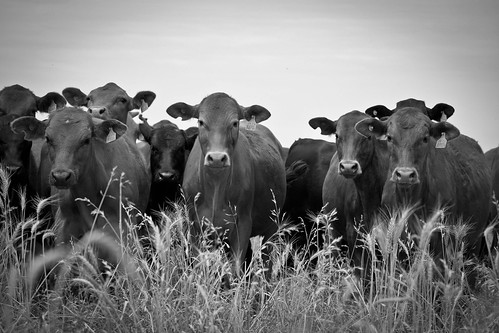Michael J. Baker
Beef Extension Specialist
Cornell University
Research is being conducted on the factors that affect the price of feeder cattle in New York. The purpose of the research is to identify where we are and to areas where New York beef producers need to focus to improve the price received for their cattle. The data is being collected at Finger Lakes Livestock Exchange in Canandaigua, which based on the 14,000 feeder calves marked in 2013 represents the value that buyers and sellers alike place on the their expertise in marketing feeder cattle. A recent article was published with data that while correct, was not placed in its full context and did not paint a favorable picture. The purpose of this article is to better explain why prices vary and what producers can do to increase the value of their calves.
The analysis of this data has provided results similar to studies conducted in Arkansas, Kansas and Missouri. There are discounts for bulls, horned, small framed and light muscled cattle. Additionally black hided cattle bring a premium to all other colors. However two results have been reported and without the context in which they occur seem troubling. Compared to Cattle Fax data the prices received in New York are in direct relation. That is our prices follow the national trend. Yet, the average difference in price is $0.28/lb. There are sound reasons for much of this difference. First is freight. Many of these cattle go to the major feeding areas in the Midwest. At $0.04/loaded mile and 1500 miles to Kansas, the cost would be $6000. With 50,000 lbs on the truck this equals $0.12/lb. The differential is now down to $0.16/lb. The second factor is that the prices reported in Cattle Fax often represent the higher end of their sales, which accounts for another $0.06 – $0.08/lb. Therefore the true difference is around $0.08 – $0.10/lb.

![]() Photo Credit: Alex Proimos via Compfight
Photo Credit: Alex Proimos via Compfight
The question now becomes how we capture that difference. Analysis of the data shows that 6-7% of the cattle in the Fall 2013 sales brought $1.87/lb. matching Cattle Fax data. The difference in these cattle is that they were uniform in weight, muscle and frame size, were preconditioned properly, were of known genetics and had a reputation with the buyers. These cattle not only captured the true $0.10/lb. difference but their quality and reputation covered the freight and Cattle Fax discount. New York has cattle that can compete on the national scale.
Another fact that has been reported, but not fully explained is that on average preconditioned cattle only bring a $0.028/lb. premium. On a 550 lb. calf this is worth $15 which is about the breakeven cost for the vaccines and dewormer. Admittedly this is not much of an incentive. The sale barn does their part by telling the buyers what the cattle had received relative to vaccinations. When a group of cattle come into the ring and it is announced that they received a killed vaccine the day before the sale, these cattle are not preconditioned. Vaccines take 3-4 weeks to deliver full immunity. Cattle receiving a killed vaccine must be vaccinated twice 3-4 weeks apart to achieve full immunity. Therefore the first killed vaccine must be given 6-8 weeks and the second 3-4 weeks prior to the sale.
Using a modified live vaccine (MLV) the day before the sale also is an issue. A MLV, while not requiring a booster can cause disease. Cattle going through the market are stressed and given a MLV just prior to the stress event can actually be worse than administering no vaccine at all.
Buyers know what works and cattle that are not preconditioned properly will not receive the premium compared to properly preconditioned cattle.
A second factor affecting the value of pre-conditioned cattle this year is simply supply. Again, the sale barn’s commitment to doing their part is demonstrated in that they sell all pre-conditioned cattle first. However if a buyer has an order that doesn’t get filled with preconditioned cattle, he is forced to buy non-preconditioned cattle for more than he would like. As the supply of feeder cattle begins to build, this relationship will change.
The take away message for beef producers is that quality sells:
- Uniform lots require a calving season less than 60 days.
- Castrate bulls
- Black hided cattle bring a $0.12/lb. premium
- Select bulls that sire heavy muscled, moderate to large frame calves.
- If using a killed product, the first vaccine should be given 2 months before the sale and followed by the second vaccine 3-4 weeks later.
- Work with a reputable bull supplier that will help you market the calves.
Taking these steps can move you into the top 6-7% of the cattle that bring national prices. If more of these cattle came through the sale barn, the manager has a lot more to work with. After all, the auction manager can only sell what is delivered to the barn. It is up to the producer to do their part so the auction manager can use his expertise to get you the highest price.
For more information on this research contact Mike Baker, (607) 255-5923, mjb28@cornell.edu.
(Appreciation is expressed to Ron and Barb Parker at Finger Lakes Livestock Exchange for allowing us to conduct this research at their facility.)

